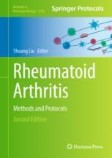Search
Search Results
-
Control and recalibration of path integration in place cells using optic flow
Hippocampal place cells are influenced by both self-motion (idiothetic) signals and external sensory landmarks as an animal navigates its...

-
Homogeneous inhibition is optimal for the phase precession of place cells in the CA1 field
Place cells are hippocampal neurons encoding the position of an animal in space. Studies of place cells are essential to understanding the processing...

-
A Model of Map Formation Based on the Association of Direction and Place Cells
Studies have shown that in recurrent neural networks, a conditioned signal (CS) from “direction cells” acquires the ability to activate the sequence...
-
Place cells and geometry lead to a flexible grid pattern
Place cells and grid cells are important neurons involved in spatial navigation in the mammalian brain. Grid cells are believed to play an important...

-
The role of astrocytes in place cell formation: A computational modeling study
Place cells develop spatially-tuned receptive fields during the early stages of novel environment exploration. The generative mechanism underlying...

-
Overview: Cancer Stem Cells
Cancer has become a global issue and retains a central place in fatality rates among the wide variety of diseases known the world over, and the...
-
Hippocampal place codes are gated by behavioral engagement
As animals explore an environment, the hippocampus is thought to automatically form and maintain a place code by combining sensory and self-motion...

-
Challenges for Place and Grid Cell Models
This chapter gives a short overview of computational models dealing with two fundamental building blocks in spatial cognition: grid and place cells,...
-
Autophagy in Embryonic Stem Cells and Neural Stem Cells
AutophagyAutophagy is a conserved cytoprotective catabolic pathway that plays a crucial role in cellular turnover and homeostasis in eukaryotic...
-
Development of Immune Cell Therapy Using T Cells Generated from Pluripotent Stem Cells
In the field of cancer immunotherapy, the effectiveness of a method in which patient-derived T cells are genetically modified ex vivo and...
-
Nanomedicine Targeting Cancer Stem Cells
Cancer stem cells (CSCs) constitute a subset of cells endowed with the remarkable abilities of self-renewal, proliferation, and differentiation....
-
Predicting survival for patients with mesothelioma: development of the PLACE prognostic model
IntroductionThe overall survival of patients with mesothelioma is poor and heterogeneous. At present, the prediction model for Chinese patients needs...

-
Lecture 1: Cells and Tissues
The cell is the basic structural and functional unit of the body. There are many different types. A group of similar cells adjacent to each other,...
-
Autophagy in the Intestinal Stem Cells
Intestinal epithelial cells that are exposed to damage caused by the contents of the lumen die, and therefore a continuous and rapid turnover takes...
-
Artificial Generation of Cancer Stem Cells from Human Stem Cells
Due to the presence of cancer stem cells (CSCs), which are considered potent to differentiate into various phenotypes, tumors are considered to be...
-

-
Primary Culture of Immunological Cells
This chapter begins with a brief description of the mechanisms associated with maintaining immunity (protection against disease-causing pathogens) in...
-

-
The Functional Assessment of T Cells
It is important to know what kind of T-cell populations are involved in various disease states, and to know the state of T-cell functions involving...
-
Differentiation of Human Embryonic/Induced-Pluripotent Stem Cells to Retinal Ganglion Cells
The generation of retinal ganglion cells (RGCs) differentiated from human embryonic stem cell (hESC) or induced-pluripotent stem cells (iPSC) could...
